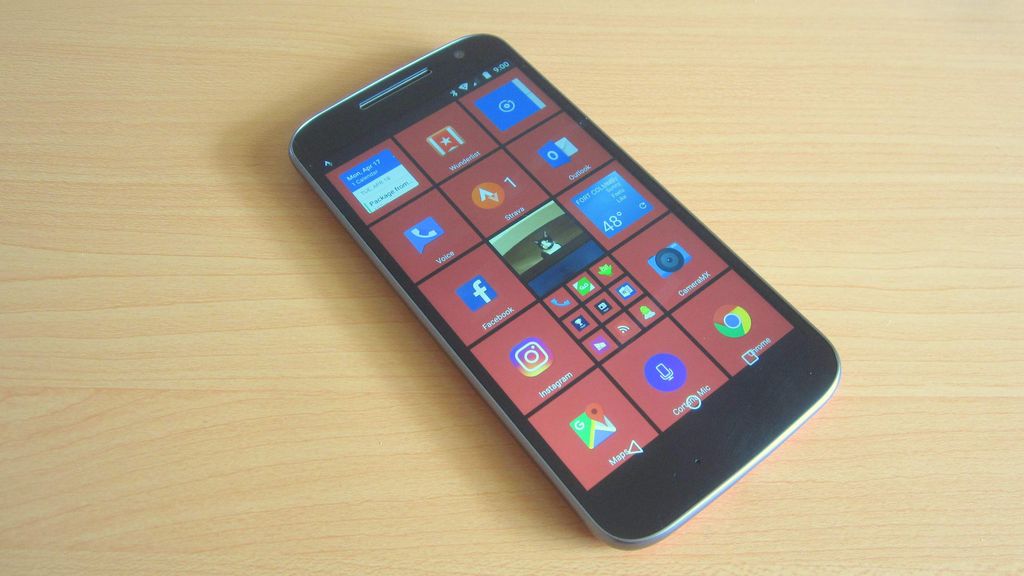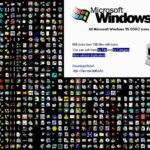The Android and Windows operating systems are two of the most popular choices for users around the world. While both systems offer similar functionality, there are several key differences that set them apart. In this article, we will explore the history, architecture, user interface, app ecosystem, security, and privacy features of Android and Windows. By understanding these differences, users can make informed decisions about which operating system best suits their needs.
Key Takeaways
- Android and Windows have different histories and development paths.
- The architecture and design of Android and Windows differ in various aspects.
- The user interface of Android and Windows offers distinct experiences.
- The app ecosystem of Android and Windows varies in terms of app stores, development tools, and compatibility.
- Android and Windows have different security features, privacy settings, and approaches to data collection and usage.
Overview of Android and Windows

History and Development
The history and development of Android and Windows operating systems have shaped their unique characteristics and functionalities. Android, developed by Google, was initially designed for mobile devices and later expanded to other platforms. Windows, on the other hand, has a long-standing history in the desktop and laptop market. Both operating systems have undergone significant updates and improvements over the years, with Android focusing on enhancing mobile capabilities and Windows catering to a wide range of computing needs.
Architecture and Design
The architecture and design of the Android and Windows operating systems play a crucial role in their functionality and user experience. Both operating systems have their unique approaches to architecture and design, which contribute to their strengths and weaknesses.
User Interface
The user interface (UI) of both Android and Windows operating systems plays a crucial role in providing a seamless and intuitive experience for users. While both platforms have their unique design principles and visual aesthetics, they share some common elements such as icons, menus, and navigation patterns. However, there are also notable differences in terms of UI customization options and user interaction.
Android offers a highly customizable UI, allowing users to personalize their device’s look and feel by changing wallpapers, themes, and icon packs. It also supports widgets, which are interactive elements that provide quick access to information or perform specific actions. On the other hand, Windows has a more consistent and streamlined UI design, with a focus on simplicity and ease of use.
In terms of navigation, Android uses a combination of physical buttons and on-screen navigation gestures. Users can navigate through different screens and apps by using the back, home, and recent apps buttons. Windows, on the other hand, primarily relies on a taskbar and a start menu for navigation, providing easy access to frequently used apps and features.
Overall, both Android and Windows offer user-friendly interfaces that cater to different preferences and usage scenarios. Whether you prefer the flexibility of Android’s customization options or the simplicity of Windows’ design, both platforms strive to provide an engaging and intuitive user experience.
App Ecosystem

App Stores and Distribution
App stores and distribution platforms play a crucial role in the Android and Windows ecosystems. They serve as centralized marketplaces where users can discover, download, and update applications for their devices. These platforms provide a convenient and secure way for developers to distribute their apps to a wide audience. Here are some key points to consider:
App Development Tools
App development tools play a crucial role in creating and maintaining Android and Windows applications. These tools provide developers with the necessary resources and features to design, code, test, and debug their apps. They offer a range of functionalities, including integrated development environments (IDEs), software development kits (SDKs), and emulators. IDEs like Android Studio and Visual Studio provide a comprehensive set of tools for writing code, managing projects, and testing apps. SDKs offer libraries, APIs, and documentation to facilitate app development. Emulators allow developers to test their apps on virtual devices before deploying them to real devices.
App Compatibility
App compatibility is an important aspect to consider when comparing the Android and Windows operating systems. It refers to the ability of an application to run smoothly and efficiently on a particular platform. While both Android and Windows offer a wide range of apps, there are some differences in terms of compatibility.
-
Android: The Android operating system is known for its open nature, allowing developers to create apps that can run on a variety of devices. This means that Android apps are generally compatible with a wide range of smartphones and tablets. However, due to the fragmentation of the Android ecosystem, there may be some compatibility issues with certain devices or older versions of the operating system.
-
Windows: Windows has a more controlled ecosystem, with apps being developed specifically for the Windows platform. This ensures a higher level of compatibility and stability. Windows apps are designed to work seamlessly on Windows devices, including desktops, laptops, and tablets. However, the app selection for Windows may be more limited compared to Android.
It’s important for users to consider app compatibility when choosing between Android and Windows, especially if they rely heavily on specific apps or require compatibility with certain devices or software versions.
Security and Privacy

Security Features
Android and Windows have different security features that help protect user data and prevent unauthorized access. Here are some key security features of Android:
Privacy Settings
Privacy settings in both Android and Windows allow users to control the access and permissions granted to apps and services. These settings enable users to manage their privacy preferences and ensure their personal information is protected. Users can customize privacy settings to restrict app access to sensitive data such as location, contacts, and camera. Additionally, both operating systems provide options to control notifications, app permissions, and data sharing settings.
Data Collection and Usage
Data collection and usage is an important aspect of both Android and Windows operating systems. Both platforms collect various types of data from users to improve their services and provide personalized experiences. However, there are some differences in how data is collected and used on each platform.
On Android, data collection and usage are primarily governed by the user’s consent and the permissions granted to apps. Android allows users to control the permissions granted to each app, giving them more control over their data. Additionally, Android provides options to limit ad tracking and control personalized ads.
On the other hand, Windows collects data to improve its services and personalize the user experience. Windows provides options to control data collection through privacy settings, allowing users to choose the level of data sharing they are comfortable with. Windows also offers features like diagnostic data viewer to provide transparency and control over the collected data.
In summary, both Android and Windows collect and use data to enhance their services, but Android offers more granular control over data permissions and ad tracking, while Windows provides transparency and control over data collection through privacy settings.
Conclusion
In conclusion, Android and Windows are two distinct operating systems with their own unique features and characteristics. Android offers a flexible and customizable user interface, a vast app ecosystem, and a strong focus on security and privacy. Windows, on the other hand, provides a familiar and user-friendly interface, a wide range of productivity tools, and seamless integration with other Microsoft products. Both operating systems have their strengths and weaknesses, and the choice between them ultimately depends on the individual’s preferences and needs. Whether you prefer the open-source nature of Android or the seamless integration of Windows, both operating systems continue to evolve and improve, providing users with a diverse range of options for their computing needs.
Frequently Asked Questions
1. Can I run Android apps on a Windows computer?
No, Android apps are designed to run on the Android operating system and cannot be directly run on a Windows computer. However, there are Android emulators available that allow you to run Android apps on a Windows computer.
2. Can I install Windows on an Android device?
No, Windows operating system is designed to run on specific hardware and is not compatible with Android devices. You cannot install Windows on an Android device.
3. Are Android and Windows compatible with each other?
Android and Windows are two different operating systems and have their own compatibility requirements. While there are certain ways to connect Android devices to Windows computers and share files, they are not inherently compatible with each other.
4. Which operating system is more secure, Android or Windows?
Both Android and Windows have their own security features and vulnerabilities. The level of security depends on various factors such as the device, software updates, and user behavior. It is important to keep both operating systems up to date and follow best security practices.
5. Can I use Windows apps on an Android device?
No, Windows apps are designed to run on the Windows operating system and cannot be directly run on an Android device. However, there are certain apps and services available that provide remote access to Windows applications on Android devices.
6. Which operating system is more popular, Android or Windows?
Android is currently the most popular operating system globally, especially in the mobile device market. Windows is more commonly used in desktop and laptop computers, but Android has a larger market share overall.




